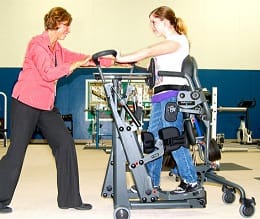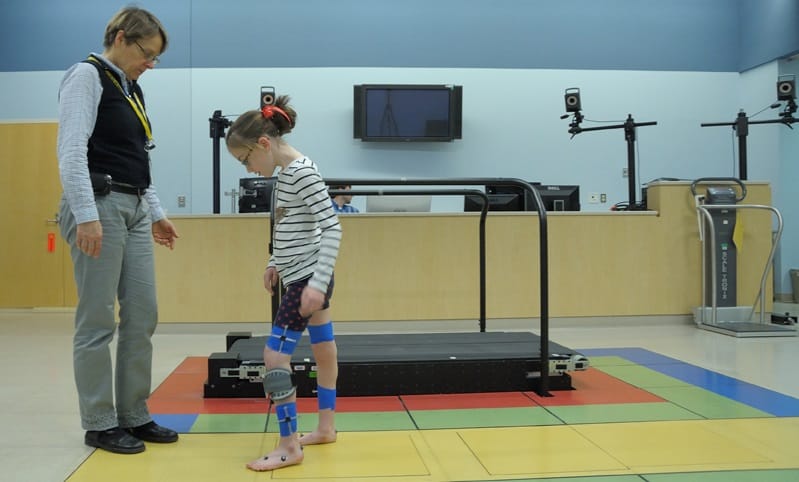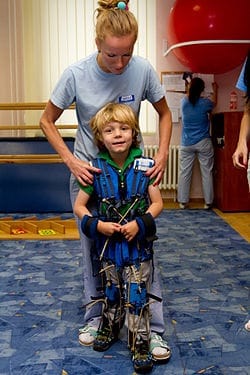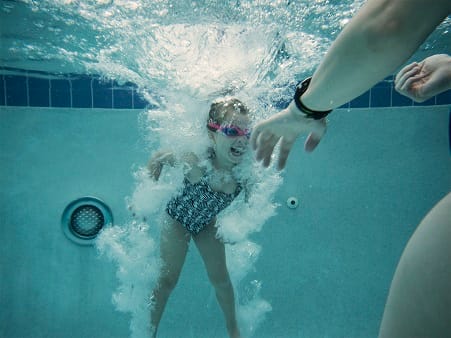THERE ARE MANY TYPES OF THERAPIES FOR CHILDREN WHO HAVE CEREBRAL PALSY – AND THERE IS CUTTING-EDGE TECHNOLOGY TO HELP CHILDREN EXERCISE, GAIN STRENGTH AND WALK – SUCH AS ROBOT-ASSISTED GAIT TRAINING AND ADELI SUIT THERAPY
Children who have cerebral palsy have an array of symptoms that may include lack of muscle coordination when performing voluntary movements, stiff or tight muscles, exaggerated reflexes, walking with one foot or leg dragging, and toe walking or “scissor gait.”

There are many health and social benefits that children with cerebral palsy can derive from exercise. These include increased participation in community activities; reduced depression; reduced anxiety; improved heart and lung function; increased strength, flexibility, mobility, balance and coordination; improved musculoskeletal health; improved gait; better weight control; and a reduced risk of chronic conditions such as heart disease. In order to reap these benefits, a safe and effective exercise program must be created. According to the American College of Sports Medicine (ACSM), the same guidelines that apply to the general population also apply to those with cerebral palsy. However, modifications may need to be made based on factors such as the child’s functional mobility level and the degree to which each limb is involved. Children with cerebral palsy have higher energy expenditure at lower power-output levels due to their motor issues, especially decreased motor control; they tend to have poor economy of movement. Thus, exercise programs

that involve aerobic activity should start with frequent, but short bouts of moderate intensity with periods of recovery. As long as the child is comfortable, the intensity of the exercise can be progressively increased. New skills should be introduced early in the work out session, before the child is fatigued. Fatigue can be detrimental to hypertonic (stiff) muscles and can hinder voluntary movement patterns. Slow stretching that lasts for 30 seconds improves muscle activation of the opposing muscle group, and sustained stretching for 30 minutes temporarily reduces spasticity in the muscle being stretched.
Resistance training is also beneficial, and it should target weak muscle groups that oppose hypertonic muscle groups. This will improve the strength of the weak muscle group and normalize the tone in the opposing hypertonic muscle group.
There are numerous devices and therapies that can help children with cerebral palsy maximize their workouts and have better motor skills.

Robot-assisted training: Robotic devices are designed to promote faster progress through longer and more intensive training sessions.
- Gait training – robot-assisted rehabilitation for the lower limbs: These devices include robotic treadmills, such as the Lokomat, which consists of a two-leg exoskeleton that has motor drives, support for the child’s body weight, and a synchronized treadmill.
- Manipulation – robot-assisted rehabilitation for the upper limbs: These devices work by utilizing goal-directed tasks and reaching movements to improve hand and arm function.

Adeli Suit therapy: The Adeli Suit is a set of garments that force skeletal muscles to work – it provides resistance exercises to specific muscles.
- Vibration therapy: For this type of therapy, children stand on a specially designed vibration plate for about 10 minutes a day or more, at least four times a week. The see-saw movement stimulates a pattern similar to walking, which improves communication between the spine and muscles, thereby increasing balance and coordination.
- Aquatherapy: Under the supervision of a trained therapist, this type of therapy allows children to exercise (and do strength training) with the help of the soothing, anti-gravity nature of a pool.
Occupational therapy: An occupational therapist helps children develop balance, strength and gait, often in tandem with the use of orthopedic devices that help to strengthen and shape

muscles.
Physical therapy: A physical therapist works with children to help strengthen and rehabilitate muscle groups. Therapists work to obtain optimal movement from their patients through a wide array of different challenges and exercises.
Speech and Language therapy: One out of every four children with cerebral palsy do not have the ability to talk. Oral motor functioning depends on a complex process of sending and receiving messages to facial, throat and neck muscles to coordinate breathing, talking, chewing, swallowing and digestion. Speech and language pathologists work to improve a child’s communication and speech, and they also work to improve the child’s swallowing and digestion. These therapists work closely with respiratory therapists, registered dietitians, and gastroenterologists.








